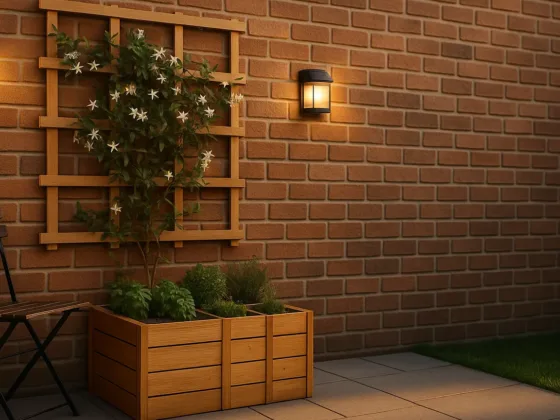Table of Contents Show
Editor’s Note: At BitsRouter, we only recommend bits we’ve tested or reviewed in real projects. No fluff—just honest guidance for your next build.
When it comes to woodworking, even the most skilled hands need the right tools to bring a project to life. And if you’ve ever worked with a router, you already know that the magic isn’t just in the machine- it’s in the bit.
Choosing the right router bits for woodworking can be the difference between a clean, professional finish and a frustrating mess of splinters, burns, and tear-out. But with hundreds of router bit options out there- each in different shapes, sizes, and uses- how do you know which one to pick?
Here you will get five expert-backed tips to help you choose the perfect router bit for your project, whether you’re building furniture, cabinetry, signs, or simply adding decorative touches to a DIY masterpiece.
5 Expert Tips to Help You Pick the Right Router Bit
1. Understand the Type of Cut You Need
Before examining the bit specs, you need to understand what your project requires. Ask yourself:
- Are you edging or shaping?
- Are you hollowing out a groove or channel?
- Do you need to copy an existing shape or pattern?
- Are you joining two pieces together?
Each task calls for a different type of router bit:
- Straight bits: for grooves and dados
- Flush trim router bit: for cutting material flush to a surface or template
- Round-over bits: for softening edges
- Chamfer bits: for creating angled edges
- Rabbeting bits: for shoulder cuts
- V-groove or engraving bits: for signage or decorative lines
Knowing the purpose will narrow your choices instantly and help you select a bit that gets the job done cleanly and efficiently.
Learn more about router bit types at Wood Magazine
2. Choose the Right Bit Material
Not all router bits are created equal, and the material they’re made of plays a huge role in performance and durability.
Here are the most common materials:
- High-Speed Steel (HSS): Inexpensive and good for softwoods, but dulls quickly on hardwood or longer jobs.
- Carbide-Tipped: Industry standard. Stays sharper longer, ideal for dense or composite materials. A great value for DIYers and hobbyists.
- Solid Carbide: Precision and longevity-focused. More expensive, but excellent for heavy-duty use.
For most serious woodworkers, carbide-tipped router bits strike the right balance between performance and price.
3. Match the Bit Size to Your Router and Task
Router bits come in various sizes. Using the wrong one can cause vibrations, rough cuts, or even damage to your router.
Shank Size:
- ¼-inch
- ½-inch
If your router supports ½-inch bits, use them. They’re stronger, more stable, and vibrate less—especially important for detailed or larger cuts.
Cutting Diameter and Length:
- Larger bits = more material removed = slower feed rate
- Smaller bits = better for precision, heat up faster
Bigger isn’t always better. For small trims or detailed work, smaller bits are safer and more effective.
Personal tip: I once used an oversized bit on a small picture frame project. Big mistake—it burned the wood and caused tear-out. Lesson learned: match bit size to task.
4. Pay Attention to Bearing Type and Quality
Bearings on router bits help guide the bit along your work surface or template. This is crucial when using a flush trim router bit where precision matters.
Key points to consider:
- Top-bearing vs. bottom-bearing: Choose based on your template position
- Replaceable bearings: Allow long-term adjustments and flexibility
- Bearing quality: Low-quality bearings wear out fast. Trusted brands are worth the investment
Whether you’re trimming veneer or following a pattern, bearings can make or break the quality of your edge.
Explore top-rated flush trim bits on Popular Woodworking
5. Don’t Just Buy—Build a Bit Strategy
A flashy 15-piece bit set may look tempting, but if half of them don’t match your projects, they’re useless.
Instead, build intentionally:
- Start with core essentials: straight bits, round-over, chamfer, flush trim
- Add based on projects: dovetail for joints, ogee for decorative, etc.
- Invest in a case to protect and organize your bit collection
When I first started woodworking, I wasted money on a bargain set. Now I buy only what I need—and each bit earns its spot in the case.
Over time, you’ll have a trusted toolkit tailored to your style, not just a cluttered drawer.
Bonus Tip: Buy Quality Once, Cry Never
Cheaper bits dull fast, burn wood, and can damage your router. Fewer high-quality bits = better cuts and less frustration.
Before buying, check independent reviews or expert breakdowns—like those at BitsRouter—so you know exactly what you’re getting.
Final Thoughts
Let’s be honest—choosing the right router bit can feel like a lot. But it doesn’t have to be. Once you understand what your project needs, invest in quality, and build your collection bit by bit (pun intended), you’ll find yourself getting pro-level results—even in a cozy home workshop.
Whether you’re trimming laminate with a flush trim router bit or carving out crisp dados, the trick is simple: let the task guide the bit, not the other way around.
So next time you’re scrolling through router bits for woodworking or standing in the aisle feeling unsure, remember these tips. They’ll save you time, prevent headaches, and help you create cleaner, sharper, more satisfying work.
FAQs
A flush trim router bit with a quality bearing is ideal for clean, accurate edge trimming.
Yes. Carbide bits stay sharp longer, cut cleaner, and are more durable, making them ideal for both hobbyists and pros.
Only with a collet adapter. But ½-inch shanks offer better stability and lower vibration.
Start with straight, round-over, chamfer, and flush trim bits. Add specialty bits based on your future projects.
Check out in-depth guides and unbiased reviews at BitsRouter for hands-on advice.
Written by Jordan Cole
Woodworking Hobbyist & Tool Reviewer
Jordan has spent over 12 years building custom furniture and testing tools across brands like Freud, Whiteside, and Bosch. His insights combine hands-on experience with a passion for helping DIYers get pro results.
Last updated: July 2025












